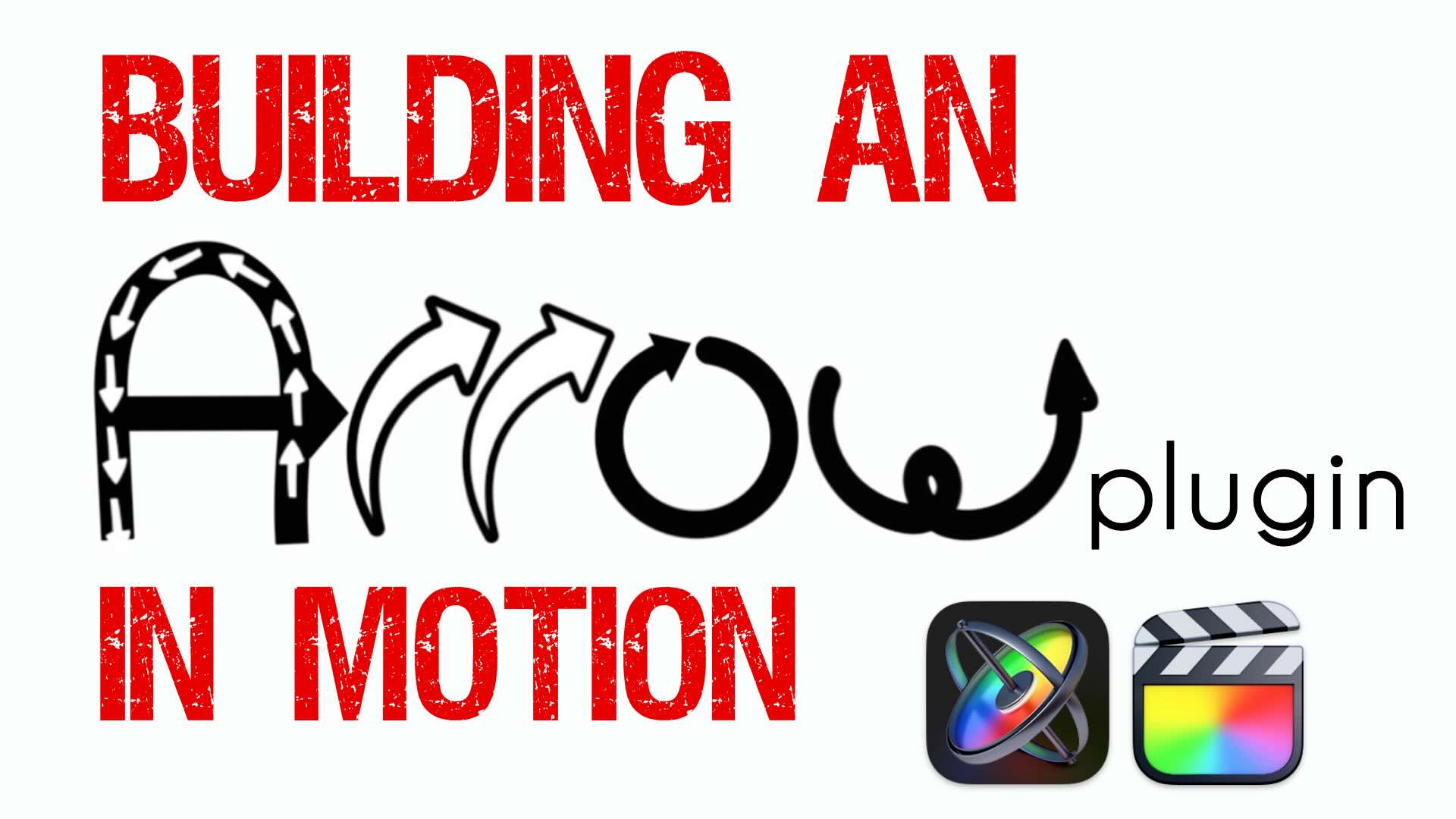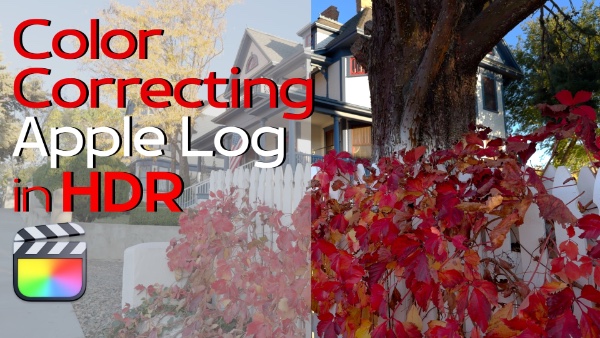Learn to Create a Multi Take Recording in Final Cut Pro X
When recording a narration track to picture, it’s rare that you’re able to nail it in the first take. Final Cut Pro X makes it easy to record multiple takes using the built-in Voiceover tool. You can quickly edit together the best parts of your read using FCP X’s audition clip.
To continue studying this subject, watch demo Sound Editing in FCP 10.4.
A scratch track is a temporary recording that will eventually be replaced with the voiceover from professional talent. One reason you might want to record a scratch track is to get a feel for how the voiceover is working against the picture.
I’ll start by moving the playhead to the frame I want the voiceover to begin on – called the punch-in point. From the window menu choose > Record Voiceover or press Option-Command-8. A window appears with options for setting up your recording. The first thing you’ll want to do is spill open the Advanced controls and choose a microphone from the Input menu.
Final Cut Pro will work with any connected USB mic or any professional mic with XLR inputs provided you are using an audio interface.
Out of the box, the voiceover tool will record using the built-in mic on your Mac. In most cases the built-in mic will work nicely for your scratch tracks, but I always tend to prefer higher quality mics (funny story – I created a scratch track for one of my client expecting it to be replaced, but they ended up using it because they liked my read better).
Here’s a picture of the Samson mic I use. It has a handy clip for connecting it to the top of my laptop and it has a very good frequency response for its size.
Whatever mic you end up recording with, make sure to do a test recording. This way you can set the proper input levels for your connected audio equipment. An input gain of 0 is always a good place to start, then you can adjust the gain up or down as needed.
When recording voiceover, most often you’ll want to leave monitoring off unless your’e using headphones otherwise, your Mac’s audio coming from your speaker will be picked up by your mic. If you do plan on monitoring with headphones, turn this option on, then adjust the gain to a comfortable listening level.
The Countdown to record option will give you a visual countdown in the viewer so you’ll know when recording will start. If you have other audio clips like dialogue, music or sound effects in your project, checking this box will mute them while you’re recording.
The last option, create Audition from takes will allow you to record multiple takes of your voiceover, then after the recording, Final Cut Pro places them into an audition clip so you can quickly choose between the best one.
Before recording, double-check to make sure your voiceover audio will be placed into the proper event using this popup. You should also name your recording to distinguish it from other voiceover recordings in the event.
I’m now ready to record… With my playhead at the punch-in point, I’ll click the record button, then read my script….
Joshua’s first test after crossing the Jordan, was the battle of Jericho…
Press the spacebar to stop recording. In the timeline, the recorded voiceover is connected at the current playhead location. That was an OK read, but I kind of messed up on the second part of the sentence…
To record a new take, I’ll click record button again….
Joshua’s first test after crossing the Jordan, was the battle of Jericho…
If you look at the connected voiceover clip, a badge appears in the upper left corner indicating the clip is an audition clip. The number following the name is the take number.
The second take was much better. Click the badge, then use the left arrow key to select it as the pick…I’ll play this one back…
Nice. But what if I wanted to use the first part of take one and the second part of take two? Here is a really great tip. Click done to close the audition window.
Select the clip then choose > Break Apart Clip Items from the Clip menu. In the timeline, both takes are broken out into separate connected audio clips.
I’ll disable the second take by selecting it and pressing V. I’ll play back the first part of the read and pause after I say Joshua’s first test after crossing the Jordan…
I’ll then trim the clip to to the playhead. Next, I’ll disable the first take and re-enable the second take.
I’ll trim the clip to remove the first part of take 2. You can use the comma and period keys to nudge the clip one frame at a time. Then I’ll re-enable the first take and play back…
Now the voiceover uses the first part of take one, and the second part of take two.
I’ll start by moving the playhead to the frame I want the voiceover to begin on – called the punch-in point. From the window menu choose > Record Voiceover or press Option-Command-8. A window appears with options for setting up your recording. The first thing you’ll want to do is spill open the Advanced controls and choose a microphone from the Input menu.
Final Cut Pro will work with any connected USB mic or any professional mic with XLR inputs provided you are using an audio interface.
Out of the box, the voiceover tool will record using the built-in mic on your Mac. In most cases the built-in mic will work nicely for your scratch tracks, but I always tend to prefer higher quality mics (funny story – I created a scratch track for one of my client expecting it to be replaced, but they ended up using it because they liked my read better).
Here’s a picture of the Samson mic I use. It has a handy clip for connecting it to the top of my laptop and it has a very good frequency response for its size.
Whatever mic you end up recording with, make sure to do a test recording. This way you can set the proper input levels for your connected audio equipment. An input gain of 0 is always a good place to start, then you can adjust the gain up or down as needed.
When recording voiceover, most often you’ll want to leave monitoring off unless your’e using headphones otherwise, your Mac’s audio coming from your speaker will be picked up by your mic. If you do plan on monitoring with headphones, turn this option on, then adjust the gain to a comfortable listening level.
The Countdown to record option will give you a visual countdown in the viewer so you’ll know when recording will start. If you have other audio clips like dialogue, music or sound effects in your project, checking this box will mute them while you’re recording.
The last option, create Audition from takes will allow you to record multiple takes of your voiceover, then after the recording, Final Cut Pro places them into an audition clip so you can quickly choose between the best one.
Before recording, double-check to make sure your voiceover audio will be placed into the proper event using this popup. You should also name your recording to distinguish it from other voiceover recordings in the event.
I’m now ready to record… With my playhead at the punch-in point, I’ll click the record button, then read my script….
Joshua’s first test after crossing the Jordan, was the battle of Jericho…
Press the spacebar to stop recording. In the timeline, the recorded voiceover is connected at the current playhead location. That was an OK read, but I kind of messed up on the second part of the sentence…
To record a new take, I’ll click record button again….
Joshua’s first test after crossing the Jordan, was the battle of Jericho…
If you look at the connected voiceover clip, a badge appears in the upper left corner indicating the clip is an audition clip. The number following the name is the take number.
The second take was much better. Click the badge, then use the left arrow key to select it as the pick…I’ll play this one back…
Nice. But what if I wanted to use the first part of take one and the second part of take two? Here is a really great tip. Click done to close the audition window.
Select the clip then choose > Break Apart Clip Items from the Clip menu. In the timeline, both takes are broken out into separate connected audio clips.
I’ll disable the second take by selecting it and pressing V. I’ll play back the first part of the read and pause after I say Joshua’s first test after crossing the Jordan…
I’ll then trim the clip to to the playhead. Next, I’ll disable the first take and re-enable the second take.
I’ll trim the clip to remove the first part of take 2. You can use the comma and period keys to nudge the clip one frame at a time. Then I’ll re-enable the first take and play back…
Now the voiceover uses the first part of take one, and the second part of take two.





